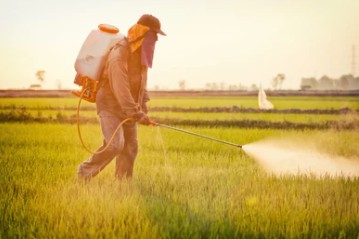The efficient production of animals requires ensuring effective maintenance and proper feeding of animals. The most important source of feed and forage utilization are forage plants, which are rich in minerals and vitamins and are essential food for animals. However, some forage plants contain naturally occurring toxic substances, and these negative factors lead to underutilization of forage, reducing live weight gain or productivity. Forage toxicity depends on animal species, animal conditions, plant growth form, plant subspecies, plant age, toxins accumulate as residues, inherent toxin potency, the percentage of plants in the animal's diet, and whether other toxins are also ingested. In addition, they can have several negative effects during preparation, storage, and maintenance and cause animal problems. They will improve animal husbandry to enable us to benefit more effectively from animal feed resources.

Naturally occurring toxic substances in forages, fodder plants, and feed rations can reduce and hinder livestock farming. Based on years of research and extension experience in the field of forage quality, Lifeasible is committed to developing state-of-the-art technology to provide hazardous substances in forage plants assessment service to help you reduce the negative impact of naturally occurring toxic substances in forage plants on animal health and production performance.
Lifeasible is a specialist in the detection of hazardous substances in forage plants. Our advantage is that laboratory measurements of harmful substances in most types of forages are based on rigorous tests on ruminants. These animal studies are conducted on a regular basis. They are critical to validating and improving our services, especially for unusual feeds or feeds for which we have little to no animal performance data. We offer customized solutions for the detection of harmful substances in the following forages:
Animals consuming feed contaminated with fungal toxins develop a disease called fungal poisoning. We offer a full range of tests for mycotoxins in silage, forage, and hay, including aflatoxins, ochratoxins, trichothecenes, zearalenes, acanthococcus, bacitracin, and fumonisins, among others. Please avoid feeding animals with moldy feeds as much as possible.
Animals with impaired alkaloids experience many serious diseases. High concentrations of alkaloids in legume forage plants can also reduce animal productivity and reproductive capacity. Our scientists have isolated and analyzed many alkaloids from forage plants.
We offer services for analyzing highly toxic glycosides in forage grasses, including thioglucosides, cyanogenic glycosides, coumarins, and saponins.
Cyanogenic glycosides are plant specific. We identify raw cyanogenic glycosides in more than 55 forage species.
Coumarin is a toxic compound present in many plants, especially in high concentrations in stevia forage plants. We offer an analytical service for coumarins in forages to protect animals from coumarins.
When forage plants with high tannin rates are consumed, the rate of consumption and digestibility of these plants by animals begins to decline. We are analyzing the negative effects of tannins as well as detecting tannins primarily in cereal forage plants.
Lifeasible is the ideal partner if you want to test for pesticide residues on forage grasses. We can test for various pesticides, such as insecticides, fungicides, herbicides, and nematicides, on forage grasses.
The fast, accurate, and reliable service you have come to expect from Lifeasible is now available for testing your forages for harmful substances. A complete list of test results will be returned to us and can be provided in pdf report format via email or in Excel format. For more information or to discuss in detail, please contact us.
Reference
Lifeasible has established a one-stop service platform for plants. In addition to obtaining customized solutions for plant genetic engineering, customers can also conduct follow-up analysis and research on plants through our analysis platform. The analytical services we provide include but are not limited to the following:
STU-CRISPR System Improves Plant Genome Editing Efficiency
April 19, 2024
Application of Exosomes in Facial Beauty
April 12, 2024